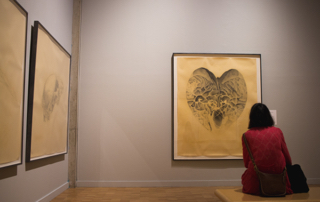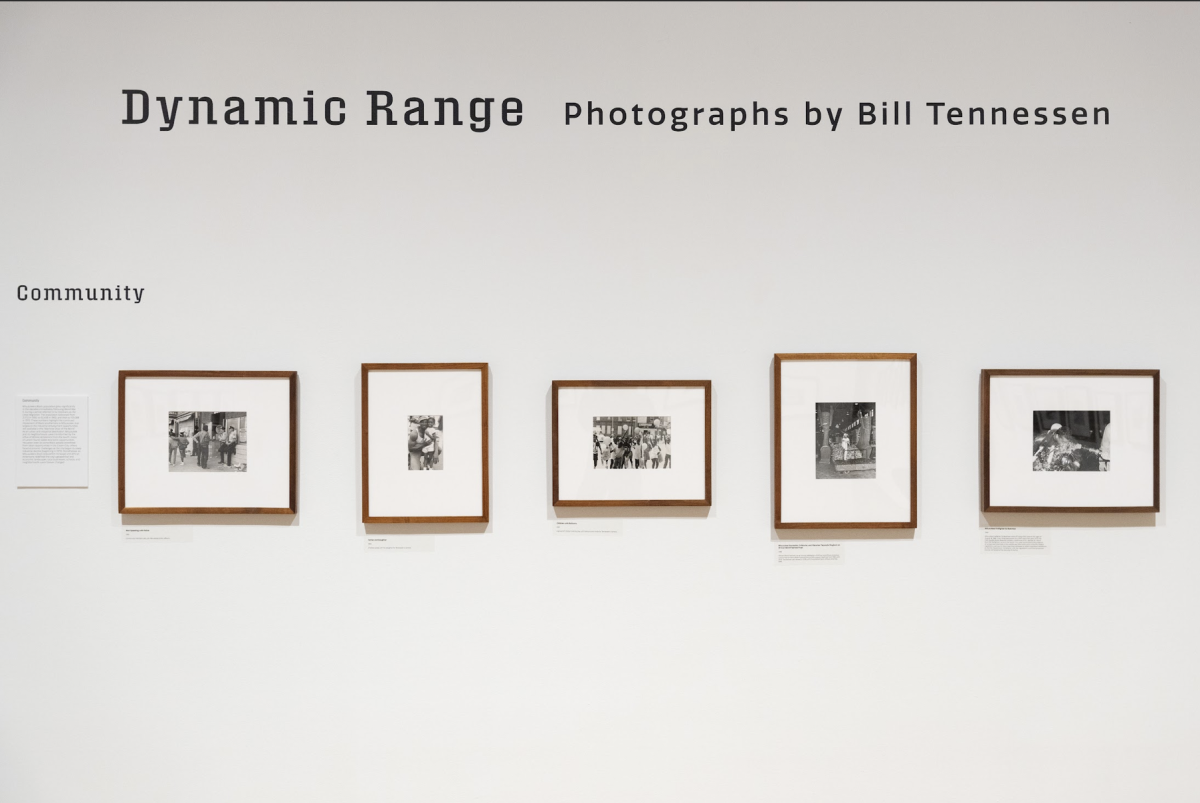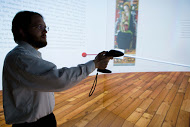When Gendron Jensen walked into the Haggerty Museum of Art last week, he wept tears of joy.
Jensen saw his series of graphite drawings together for the first time in four decades. The series, entitled “Series on Resurrection in Nature,” will hang on the walls of the Haggerty until Dec. 23. It is properly framed for the first time, thanks to an investment from the museum.
Jensen flew up from New Mexico to visit Milwaukee and see the display. This rare opportunity allowed the artist to watch his audience view the pieces and speak with them.
“I think the best of all places is where we are right now, because this is in a learning atmosphere,” Jensen said of having his art displayed on Marquette’s campus. “And I would hope that what I have done, the monumental exertion, will go into the lives (here), especially of the students.”
The chance for students and the artist to interact was significant for both parties. Jensen spoke with students from various fields including a theology class, a Spanish culture class, a dance class and a biology class. His art, massive pencil illustrations of minuscule details in nature with strong religious symbolism, is capable of easily transcending the boundaries of disciplines.
While his work is incredibly detailed and complex, Jensen’s medium is quite simplistic. All he needed was a paper, a pencil and a subject.
“Pencils are our vernacular,” Jensen said.
Last Monday, he sat before the students, dressed in a monochromatic black outfit reminiscent of a priest’s clerical clothes, his wispy white hair supplying the glimpse of white one would expect from a collar.
Instead, he wore around his neck a necklace of bones, complete with a hand-sized skull of a young deer killed by an oncoming vehicle. He told the deer’s story to the students, memorializing the animal’s life and death in this talk. He explained that humans should be more aware of their impact on nature.
He has worn the bones at every speaking venue he has gone to since 1972. Like in his drawings, the bones and shells are empty, but they also symbolize the capacity for life.
“They’re beautiful drawings,” said Lynne Shumow, curator of education at the Haggerty. “And for me, I’m able to relate them to science and nature and environmental ethics. There’s a lot of theological topics we can cover (as well).”
At 19, Jensen began the process of becoming a monk at St. Benedict’s Abbey, located a mere 45 minutes away on the Illinois-Wisconsin border. He began teaching himself how to draw, and after two years he stopped pursuing a life in the abbey.
He would return five years later to work in the abbey’s print shop, but in 1970 Jensen left for the last time to pursue the calling of his art. He was 29 when he drew the series, beginning with small iterations before magnifying the works on larger paper. He completed the series at age 30.
Standing before them, the audience can peer into an empty walnut shell in the first drawing, entitled “I begin here.” From there, the viewer sees skulls, shells, wings and claws, each with a title containing a play on words or dual meaning.
“The objects found me, and they fell into a sequence,” Jensen said. “All I could do was be open and heed the invocation. They called to me. It’s as if they had been waiting for me for all time.”
Dr. Deirdre Dempsey, associate professor of theology, took her students from Explorations in Christian Theology: Theology and the Visual Arts to the exhibition. She said the benefit of going to the exhibit was more than exposing her students to the vocabulary and versatility of religious-inspired art. The series could also function as a guide for meditation outside of class. The work, as is the case with art in general, held something for everyone.
“Sometimes it’s the technical stuff that fascinates me,” Dempsey said. “How do they do such large (drawings)? I was also actually struck by the humor of his titles, that he’s making puns, but I would say that for me, they did have his intended effect. You look at them and you are struck by the beauty of natural objects.”
Zoe Hammis, a senior in the College of Arts & Sciences, is studying biological sciences and has experience doing wildlife research and conservation work. She found the series’s themes and commentary on nature especially impactful.
“(Jensen) spoke of how we as humans must deal with the guilt of driving innocent animals, which do not know ignorance or greed, to extinction,” Hammis said. “A large aspect of his art that he spoke of is the fact that he is honoring these creatures’ lives, and not letting them die in vain. He also attempts to convey a message of purpose and significance in all living things, large and small.”
Hammis said the artist’s message lines up with her own beliefs.
“The fact that he ties these messages about honoring living creatures, which I personally believe is extremely important, in with the theological messages about resurrection, resurgence and rebirth in his art is incredible,” Hammis said.
These are the moments Jensen craves.
“Artists don’t live in a vacuum,” Jensen said. “We long to have people tell us how they feel. It helps to spur us on.”
Jensen’s “Series on Resurrection in Nature” will be open until Dec. 23, 2016.





